Antitank capabilities of Soviet 76,2 mm self-propelled artillery mounts
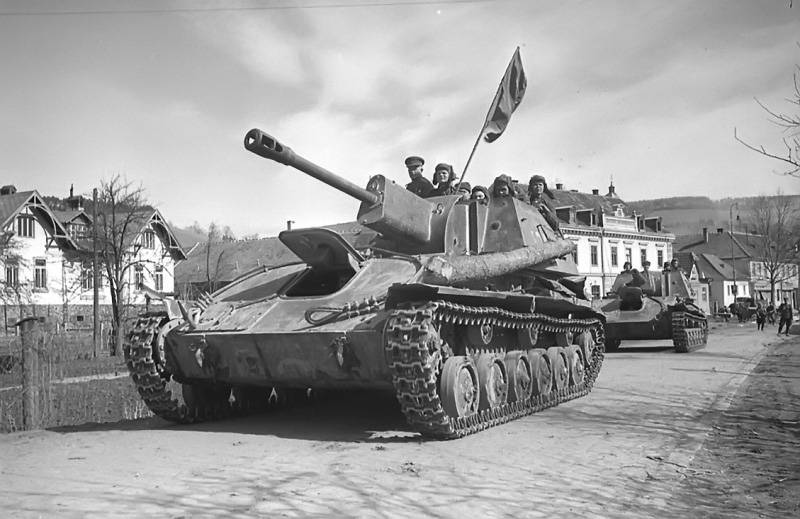
During the war, the tasks of providing fire support to the infantry units of the Red Army were mainly assigned to 76,2 mm regimental and division guns. After stabilization of the front line and the start of offensive operations, it became clear that, due to the shortage of tractors, artillery towed by horse carts often didn’t have time to change their firing position on time, and it was very difficult to roll out the guns with calculation forces following the advancing infantry over rough terrain. In addition, the calculations of guns firing direct fire at enemy firing points suffered heavy losses from bullets and fragments. It became obvious that Soviet troops needed self-propelled artillery mountings capable of taking on some of the functions of divisional artillery. From the very beginning, it was envisaged that such self-propelled guns should not directly participate in the attack. Moving at a distance of 500-600 meters from the advancing troops, they could suppress firing points with the fire of their guns, destroy fortifications and destroy enemy infantry. That is, a typical “art-storm” was required, if we use the terminology of the enemy. This presented different requirements for self-propelled guns compared to tanks. The protection of self-propelled guns could be less, but it was preferable to increase the caliber of the guns and, as a result, the power of the shells.
Although a self-propelled gun armed with a 76,2-mm divisional gun could have been created much earlier, work on the design of such self-propelled guns at plant No. 38 in the city of Kirov began only a year after the outbreak of war, and the assembly of the first vehicles was completed in the late autumn of 1942.
The SU-76 self-propelled artillery mount was created on the basis of the T-70 light tank using a number of automotive units and is armed with a 76 mm ZIS-ZSh gun (W - assault), a specially developed version of the divisional gun for the self-propelled guns. The angles of vertical guidance ranged from -3 to + 25 °, in the horizontal plane - 15 °. The vertical aiming angle made it possible to reach the firing range of the ZIS-3 divisional guns, that is 13 km, and while conducting military operations in the city, to fire at the upper floors of buildings. When shooting direct fire, the standard ZIS-12 gun sight was used, while shooting from closed firing positions, a panoramic sight was used. The combat rate of fire did not exceed 60 rds / min. Ammunition - XNUMX shells.
SU-76 self-propelled artillery mount
Due to the need to place a rather large gun in the combat vehicle, the T-70 tank hull had to be lengthened, and after it the chassis also lengthened. SU-76 had an individual torsion bar suspension for each of the 6 road wheels of small diameter on each side. Driving wheels were located in front, and sloths were identical to basic skating rinks. The propulsion system, transmission and fuel tank were located in front of the armored vehicle. The SU-76 was driven by a power plant of two 4-stroke in-line 6-cylinder GAZ-202 carburetor engines with a total capacity of 140 liters. with. The capacity of the fuel tanks was 320 liters, the range of the car on the highway reached 250 km. The maximum speed on the highway was 41 km / h. In the field - up to 25 km / h. The mass in combat position is 11,2 tons.
Frontal armor 26-35 mm thick, side and aft 10-15 mm thick provided protection for the crew (4 people) from small arms and fragments. On the first production version there was also an armored 6 mm roof. Initially, the self-propelled gun was supposed to have a wheelhouse open on top, but Stalin personally ordered the roof to be equipped with self-propelled guns.
The first serial SU-76 in the amount of 25 units at the beginning of 1943 were sent to the training self-propelled artillery regiment. In February, the first two self-propelled artillery regiments (SAP) \, equipped with SU-76, went to the Volkhov Front and took part in breaking through the blockade of Leningrad. Initially, the SU-76 was sent to the SAP, which also had the SU-122, but subsequently, to facilitate material and technical supply and repair, each regiment was equipped with one type of self-propelled guns.
During the fighting, self-propelled guns showed good mobility and patency. The firepower of the guns made it possible to effectively destroy light field fortifications, to destroy the accumulation of manpower and to fight the enemy’s armored vehicles.
Having a high cross-country ability and a relatively small mass, the SU-76 was able to operate where heavier vehicles could not be used at all or were used inefficiently: in mountainous and wooded areas. Thanks to the elevation angle of the gun, which was significant for self-propelled guns, the installation could also fire from closed positions.
But, unfortunately, with all its advantages and relevance, the first production SU-76s in difficult front-line conditions demonstrated unsatisfactory technical reliability. In combat units there was a massive failure of transmission elements and engines. This happened due to erroneous technical solutions laid down during the design and due to the unsatisfactory quality of engine and transmission manufacturing. To eliminate the main problems that led to mass breakdowns, batch production was stopped, and qualified factory teams were sent to the front-line workshops involved in the restoration of the SU-76.
Before stopping mass production, 608 SU-76s were built. A number of repaired self-propelled guns survived until the summer of 1943. So, on the Kursk Bulge, as part of the 45th and 193rd tank regiments, 11 SU-76s fought. Another 5 self-propelled guns of this type were in the 1440th SAP. In the summer heat, the temperature in the fighting compartment inside the closed cabin often exceeded 40 ° C. Due to poor ventilation during firing, there was a high gas contamination and the working conditions of the crew were very difficult. In this regard, the SU-76 received the nickname "gas chamber".
Self-propelled artillery mount SU-76M
After taking rather strict disciplinary measures, the SU-76 was modernized. In addition to improving the quality of mass-produced cars, in order to increase reliability and increase motor resources, changes were made to the design of the motor-transmission and chassis. Self-propelled installation with a motor-transmission group, borrowed from a light tank T-70B, received the designation SU-76M. Subsequently, the power of the twin propulsion system was increased to 170 hp. Two elastic couplings were installed between the engines and gearboxes, and a friction slip clutch between the two main gears on a common shaft. Thanks to this, it was possible to increase the reliability of the motor-transmission part to an acceptable level.
The thickness of the frontal armor, sides and stern remained the same as that of the SU-76, but there was a rejection of the armored roof of the fighting compartment. This allowed to reduce weight from 11,2 to 10,5 tons, which reduced the load on the engine and chassis. The transition to a combat compartment open at the top solved the problem of poor ventilation and improved the visibility of the battlefield.
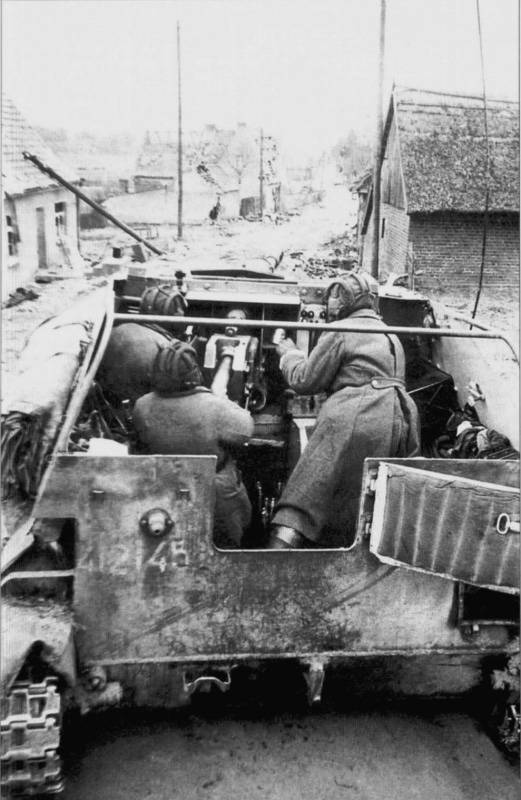
The calculation of the SU-76M fires from the guns during the battle in the village
The installation could overcome a trench up to 2 m wide and a rise of up to 30 °. Also, the SU-76M was able to force the ford to a depth of 0,9 m. The undoubted advantages of the installation could be attributed to its small size and low specific ground pressure, which was 0,545 kgf / cm². Self-propelled guns could move through wooded and swampy areas. It was possible to accompany the infantry in those places where medium tanks could not move. The range of self-propelled guns on the highway was 320 km, on a dirt road - 200 km.
In the stowed position, to protect against road dust and precipitation, the fighting compartment was covered with a tarp. For self-defense against enemy infantry, a DT-29 machine gun appeared in the armament.
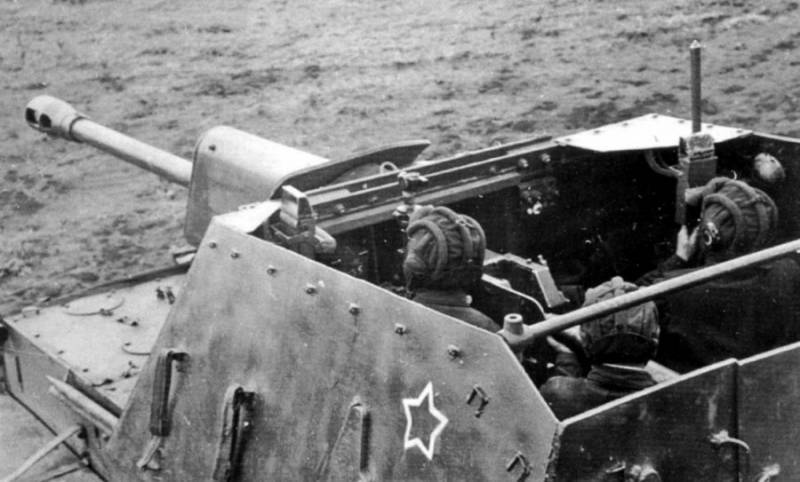
Self-propelled guns SU-76 and SU-76M during the war years were equipped with several dozen self-propelled artillery regiments. At the beginning of 1944, the formation of self-propelled artillery divisions began (each consisted of at first 12, and later 16, SU-76M). They replaced several dozens of rifle divisions with individual anti-tank divisions. Then they started the formation of light self-propelled artillery brigades RVGK. In these formations there were 60 SU-76M units, five T-70 tanks and three American M3A1 Scout Car armored vehicles. In total, four such brigades were formed in the Red Army. Before the end of World War II, more than 11000 SU-76Ms entered the troops.
Initially, many commanders of tank and combined arms units, having no idea about the tactics of self-propelled artillery, often sent lightly armored self-propelled guns to frontal suicide attacks along with medium and heavy tanks.
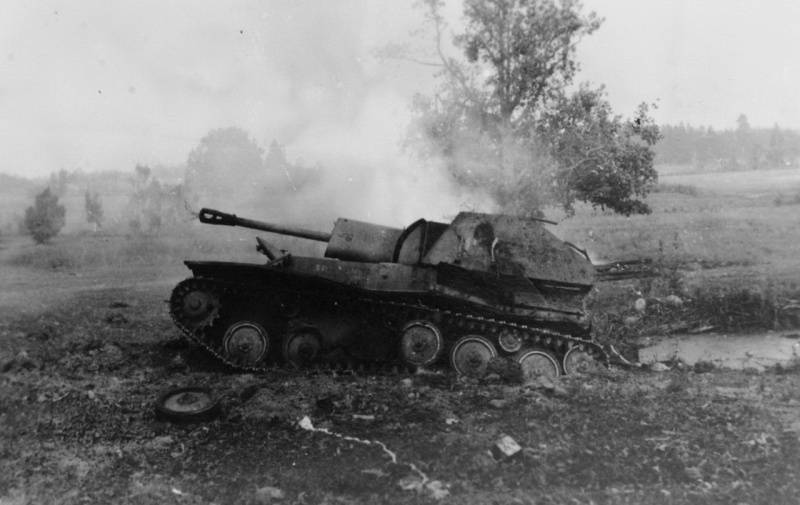
Incorrect use, as well as the fact that at first the crews of self-propelled guns were equipped with former tankers, led to a high level of losses. Of the crew members, the driver was most at risk, whose workplace was located next to the gas tank, and if a shell hit it, it could burn alive. As a result, at the first stage of combat use, light self-propelled guns were not popular among personnel and earned many unflattering nicknames. But with the correct use of the SU-76M, it fully justified itself and was a very good alternative to the towed divisional cannon ZIS-3. With the accumulation of experience, the effectiveness of self-propelled guns armed with a 76,2 mm gun has seriously increased.
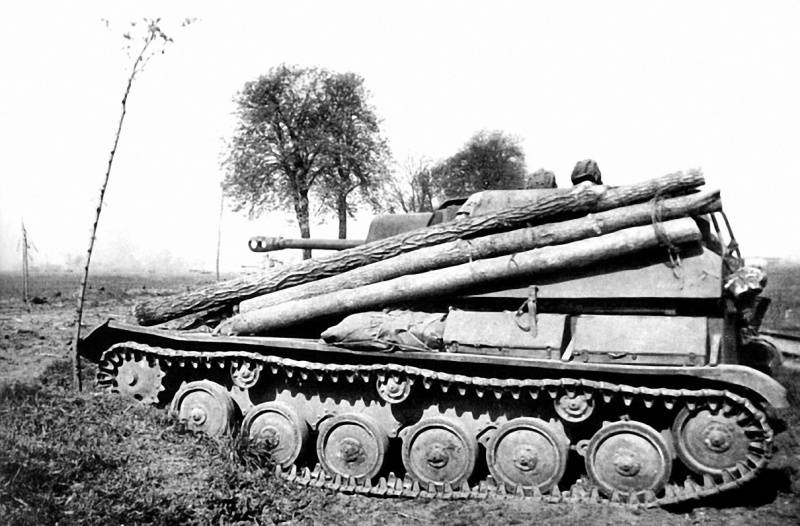
SU-76M with additional side logging, which were also used for self-pulling
At the time of its appearance, the SU-76 could quite successfully deal with German tanks. However, by mid-1943, after a sharp increase in the protection and firepower of German tanks, the 76,2 mm gun was not so effective. For example, the most popular modification of the German “four” (more than 3800 vehicles were built), the medium tank Pz.KpfW.IV Ausf.H, which began production in April 1943, had frontal armor of the hull with a thickness of 80 mm and was armed with a very effective 75 mm gun KwK.40 L / 48 with a barrel length of 48 calibers.
The firepower and protection of the heavy German tanks PzKpfw V Panther and Pz.Kpfw Tiger was even higher, which made fighting them a very difficult task. According to the reference data, the 53-BR-350A blunt-headed armor-piercing projectile, which was part of the ZIS-3 gun’s ammunition, could penetrate 300 mm armor at a range of 73 m normal, at an angle of 60 ° at the same distance, armor penetration was 60 mm. Thus, the 76,2-mm gun mounted on the SU-76M could confidently penetrate only the onboard armor of the “fours” and “Panthers”. At the same time, the firing of cumulative shells used in regimental cannons was strictly forbidden due to the unreliable operation of fuses and the risk of rupture in the barrel when firing from 76,2 mm divisional and tank guns. Information that cumulative shells appeared in the ZIS-3 ammunition at the end of 1944 does not correspond to reality.
In the second half of 1943, the production of 76,2 mm 53-BR-354P projectile shells began. This projectile weighing 3,02 kg had an initial speed of 950 m / s and at a distance of 300 m, normally it was able to overcome 102-mm armor. At a range of 500 m, armor penetration was 87 mm. Thus, acting from an ambush with a minimum firing range in the presence of submunitions of ammunition in the ammunition, the SU-76M crew had good chances to hit a German heavy tank. Another issue is that sub-caliber shells were primarily sent to anti-tank fighter divisions. If they were in the SU-76M ammunition, then in a very limited quantity, and were on special account.
However, in the fight against enemy armored vehicles, a lot depended on the technical condition of the vehicle, the level of training of the crew and the tactical literacy of the commander. The use of such strong qualities of the SU-76M as good mobility and high passability on soft soils, camouflage taking into account the terrain, as well as maneuvering from one shelter in the ground to another, often made it possible to achieve victory even over heavy enemy tanks. Since the second half of 1944, the importance of the SU-76M as an anti-tank weapon has decreased. By that time, our troops were already quite saturated with specialized anti-tank guns and tank destroyers, and enemy tanks became a rarity. During this period, the SU-76M was used exclusively for its intended purpose, as well as for transporting infantry, evacuating the wounded and as vehicles of advanced artillery observers.
Self-propelled artillery mount SU-76I
Talking about Soviet self-propelled artillery installations armed with a 76,2 mm gun, one cannot but mention self-propelled guns built on the basis of captured German Pz tanks. Kpfw III and SPG StuG III. Although not many were produced, at a certain stage they played a prominent role in the course of hostilities. By mid-1942, Soviet troops captured more than 300 serviceable or reconditionable Pz tanks. Kpfw III and SPG StuG III. Since the standard armament of these vehicles for a number of reasons did not satisfy the Soviet command, it was decided to use the trophy chassis to create a 76,2 mm self-propelled gun.
During the design, the self-propelled guns received the designation SU-76 (T-III), then SU-76 (S-1) and finally - SU-76I. The installation was officially adopted on March 20, 1943, and in May the first SU-76I entered the Moscow training center for self-propelled artillery. In the formation of units equipped with new self-propelled guns, the same standard procedure was used as for the SU-76, but instead of the commander T-34s, they initially used captured Pz. Kpfw III, which was then replaced by the SU-76I in the commander’s version. The release of self-propelled guns on a trophy chassis continued until November 1943, inclusive. In total, they managed to assemble 201 SU-76I, of which more than 20 in the commander's version.
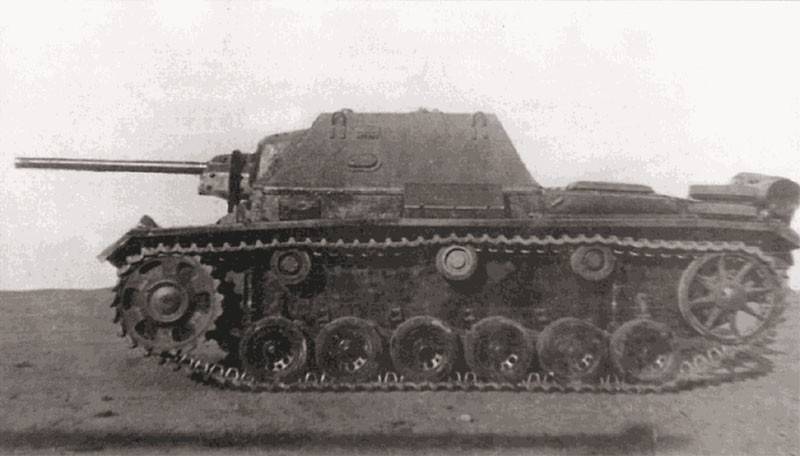
SU-76 AND
Machine created on the basis of Pz. Kpfw III, in a number of parameters, looked more preferable than the SU-76 and SU-76M. First of all, the SU-76I won in terms of security and reliability of the motor-transmission group.
The self-propelled gun had a reservation of the frontal part of the hull with a thickness of 30-50 mm, the hull side - 30 mm, the cutting forehead - 35 mm, the cabin side - 25 mm, the feed - 25 mm, the roof - 16 mm The cabin had the shape of a truncated pyramid with rational angles of inclination of the armor plates, which increased the armor resistance. Such armor protection, which provided invulnerability from 20 mm and partly from 37 mm shells, would have looked nice in June 1941, but in mid-1943 it could no longer protect against 50 and 75 mm German guns.
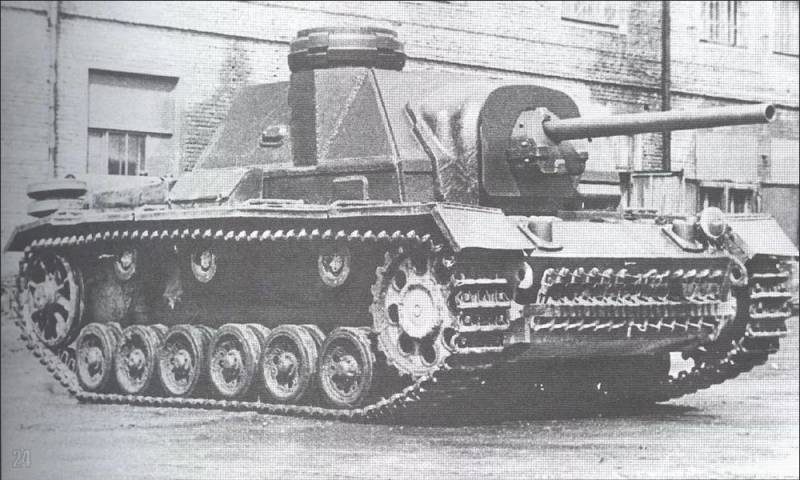
Commander SU-76I
Some of the vehicles intended for use as commander’s vehicles were equipped with a powerful radio station and a commander’s turret with an access hatch from Pz. Kpfw III. When creating the SU-76I, designers paid special attention to the review of the combat vehicle. In this regard, this self-propelled gun outperformed most Soviet tanks and self-propelled guns manufactured in the same time period.
Initially, the SU-76I was planned to be equipped with a 76,2 mm ZIS-3Sh gun. But in this case, reliable protection of the gun’s embrasure from bullets and fragments was not provided, since cracks formed in the shield when lifting and turning the gun. As a result, the designers opted for the 76,2 mm S-1 gun. It was created on the basis of the tank F-34, especially for light experienced self-propelled guns of the Gorky Automobile Plant. Angles of vertical guidance: from -5 to 15 °, horizontally - in the sector ± 10 °. The practical rate of fire of the gun was up to 6 rds / min. According to the characteristics of armor penetration, the S-1 gun was completely identical to the F-34 tank. Ammunition amounted to 98 shells. For firing, the whole range of artillery rounds of 76,2 mm tank and division guns could be used. On command vehicles due to the use of a more powerful and bulky radio station, the ammunition load was reduced.
Cases of successful use of the SU-76I against German Pz tanks have been documented. Kpfw III and Pz.KpfW.IV. But in the summer of 1943, when the self-propelled guns went into battle for the first time, their firepower was no longer enough for a confident fight with all the German armored vehicles. Nevertheless, the SU-76I was popular with crews, who noted a higher reliability, ease of control and an abundance of observation devices compared to the SU-76. In addition, the self-propelled gun was practically inferior to the T-34 tanks in terms of mobility on rough terrain, surpassing them in speed on good roads. Despite the presence of an armored roof, self-propelled gunners liked the relative spaciousness inside the fighting compartment. Compared with other domestic self-propelled guns, the commander, gunner and loader in the conning tower were not too constrained. As a significant drawback, the difficulty of starting the engine at low temperatures was noted.
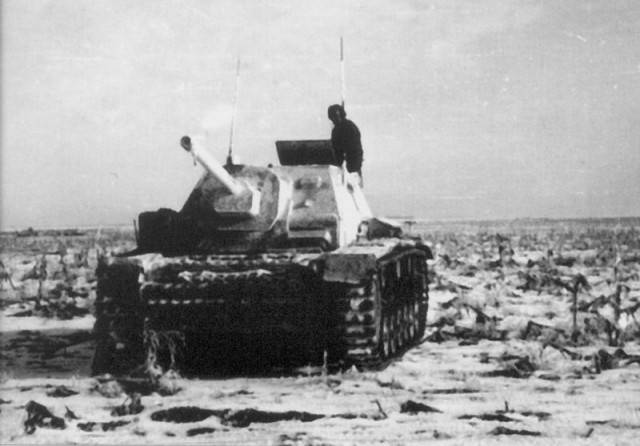
Self-propelled guns SU-76I fought until the summer of 1944. After that, the few surviving vehicles were decommissioned due to running out of resources for the undercarriage, engine and transmission. In the training units, separate self-propelled guns served until the end of the war. Currently, the only surviving original SU-76I is installed in the city of Sarny, Rivne region (Ukraine).
During the war, this car fell from a bridge into the Sluch River and lay at the bottom for almost 30 years. Subsequently, the car was lifted, restored and became a monument. Self-propelled guns SU-76I, installed in Moscow on Poklonnaya Hill and in the UMMC Museum in the city of Verkhnyaya Pyshma, Sverdlovsk Region, are remodels created using the Pz chassis. Kpfw III.
To be continued ...
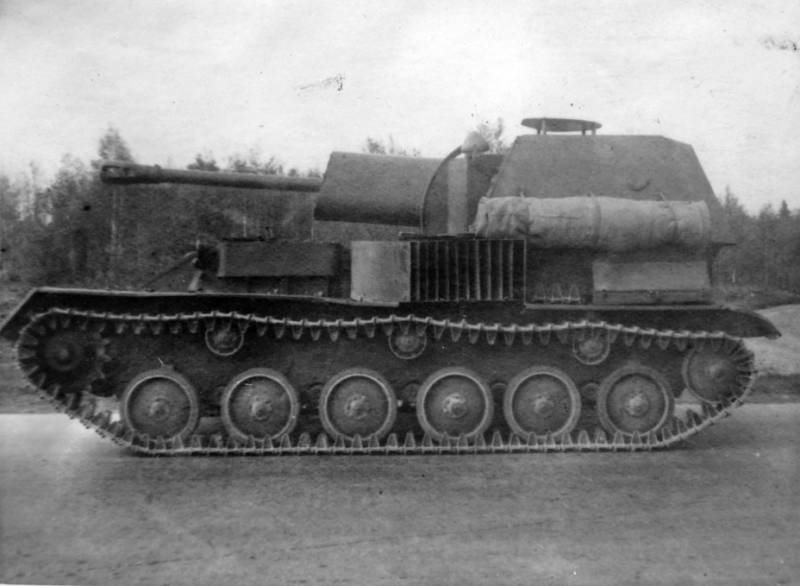
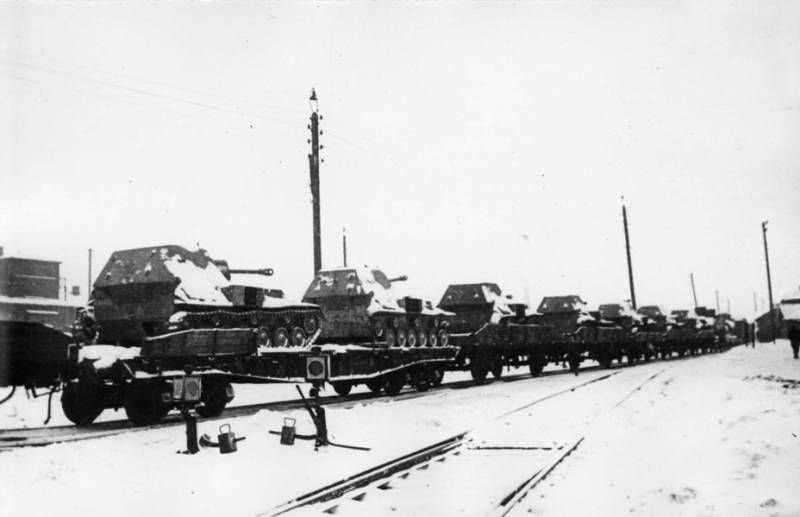
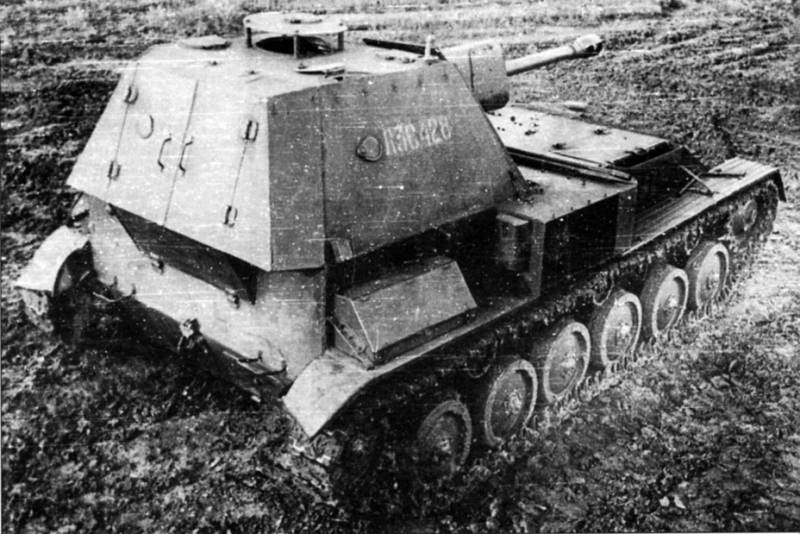
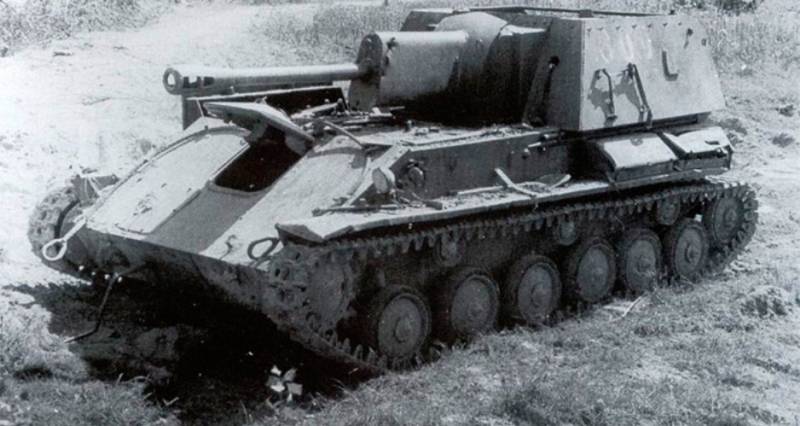
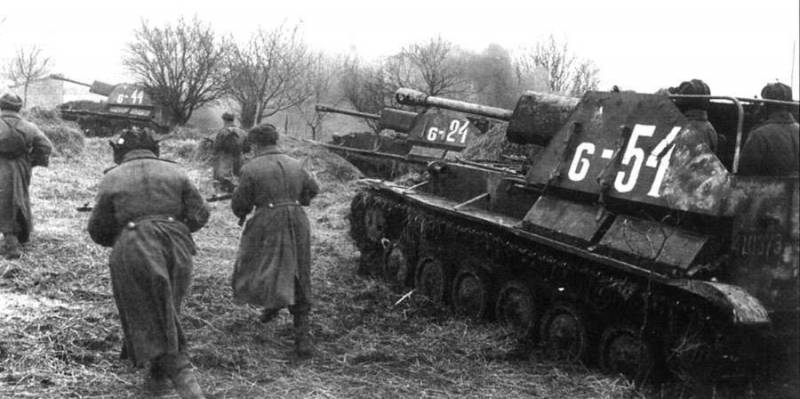
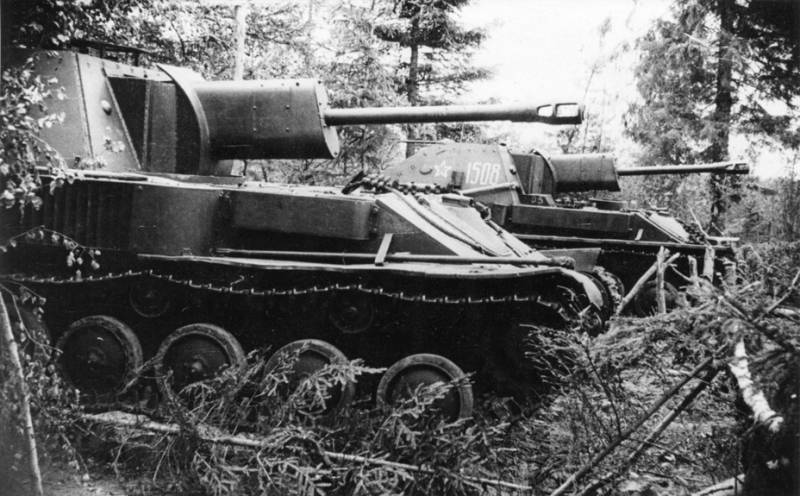
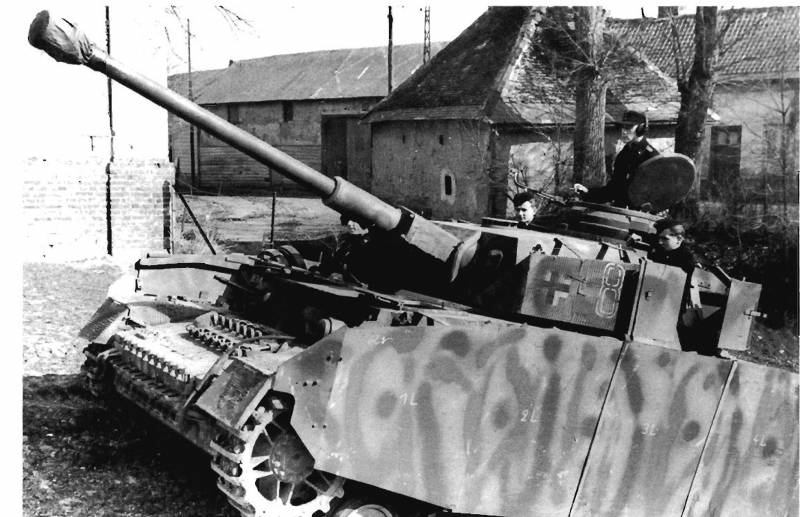
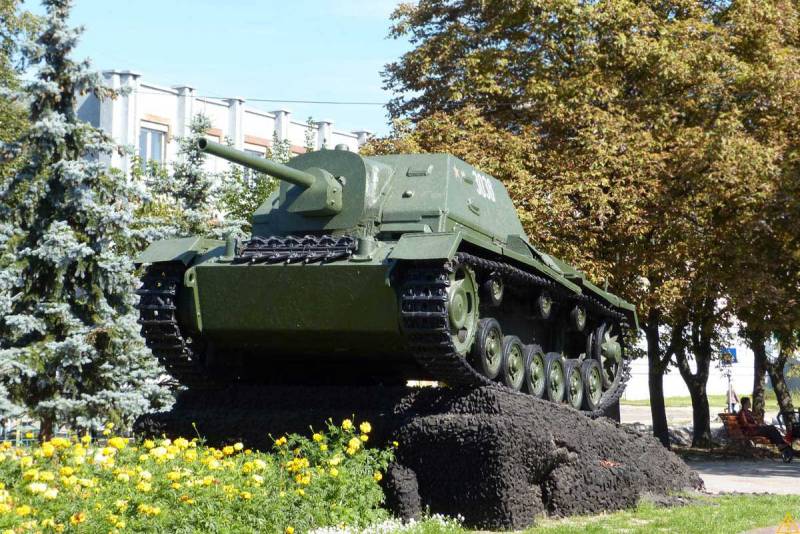
Information